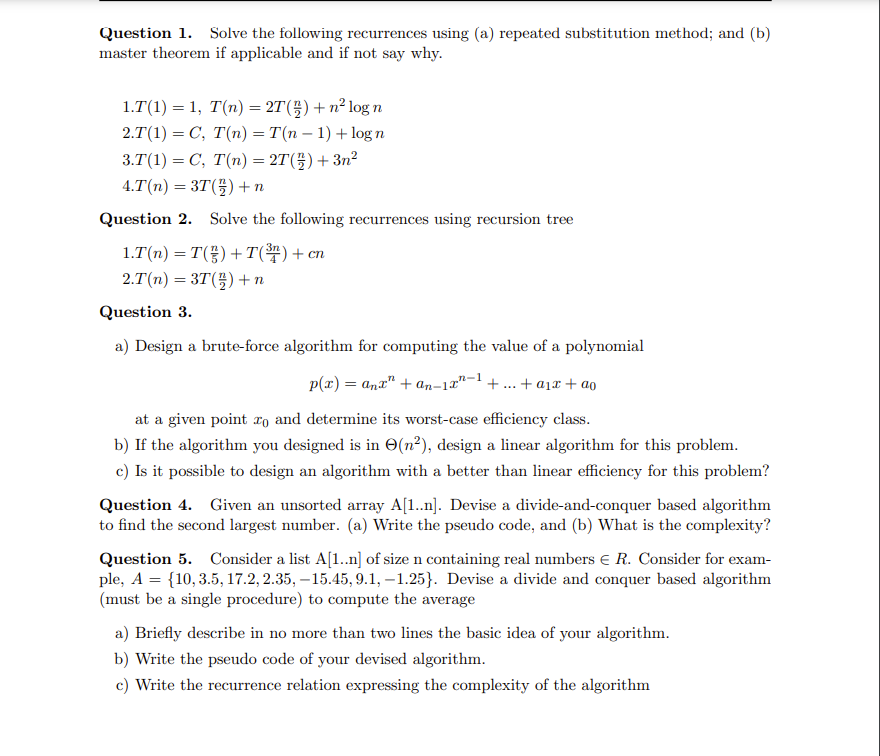Answered step by step
Verified Expert Solution
Question
1 Approved Answer
Question 1 . Solve the following recurrences using ( a ) repeated substitution method; and ( b ) master theorem if applicable and if not
Question Solve the following recurrences using a repeated substitution method; and b
master theorem if applicable and if not say why.
T TnT
n
n
Question Solve the following recurrences using a repeated substitution method; and b
master theorem if applicable and if not say why.
Question Solve the following recurrences using recursion tree
Question
a Design a bruteforce algorithm for computing the value of a polynomial
dots
at a given point and determine its worstcase efficiency class.
b If the algorithm you designed is in design a linear algorithm for this problem.
c Is it possible to design an algorithm with a better than linear efficiency for this problem?
Question Given an unsorted array An Devise a divideandconquer based algorithm
to find the second largest number. a Write the pseudo code, and b What is the complexity?
Question Consider a list of size containing real numbers inR. Consider for exam
ple, Devise a divide and conquer based algorithm
must be a single procedure to compute the average
a Briefly describe in no more than two lines the basic idea of your algorithm.
b Write the pseudo code of your devised algorithm.
c Write the recurrence relation expressing the complexity of the algorithm
log n
T C Tn Tn log n
T C TnT
n
n
TnT
n
n
Question Solve the following recurrences using recursion tree
Tn T
n
T
n
cn
TnT
n
n
Question
a Design a bruteforce algorithm for computing the value of a polynomial
px anx
n anx
n ax a
at a given point x and determine its worstcase efficiency class.
b If the algorithm you designed is in Theta n
design a linear algorithm for this problem.
c Is it possible to design an algorithm with a better than linear efficiency for this problem?
Question Given an unsorted array An Devise a divideandconquer based algorithm
to find the second largest number. a Write the pseudo code, and b What is the complexity?
Question Consider a list An of size n containing real numbers in R Consider for example, A Devise a divide and conquer based algorithm
must be a single procedure to compute the average
a Briefly describe in no more than two lines the basic idea of your algorithm.
b Write the pseudo code of your devised algorithm.
c Write the recurrence relation expressing the complexity of the algorithm

Step by Step Solution
There are 3 Steps involved in it
Step: 1

Get Instant Access to Expert-Tailored Solutions
See step-by-step solutions with expert insights and AI powered tools for academic success
Step: 2

Step: 3

Ace Your Homework with AI
Get the answers you need in no time with our AI-driven, step-by-step assistance
Get Started


